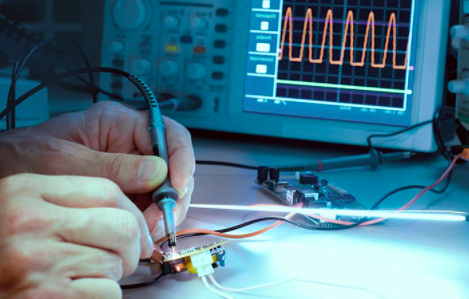 Understanding isolation ratings on power supplies can be important when you use any type of high-voltage power supply within your business. If you have a 10 kV power supply with an isolation rating of 3500 V, you may be wondering why there is such a disparity between the total power value in the device and its isolated voltage rating. The explanation of these basic functions comes down to discovering the typical DC and the high DC voltage through the converter as well as what drives the high-voltage transformer.
Understanding isolation ratings on power supplies can be important when you use any type of high-voltage power supply within your business. If you have a 10 kV power supply with an isolation rating of 3500 V, you may be wondering why there is such a disparity between the total power value in the device and its isolated voltage rating. The explanation of these basic functions comes down to discovering the typical DC and the high DC voltage through the converter as well as what drives the high-voltage transformer.
When we look at a circuit, we need to consider the isolation rating of the power supply. It will always need to be higher than the highest voltage output that’s required of the supply. A high-voltage output for a transformer will need to drive the circuit and this means multiplying the output of the transformer to produce the ideal return.
If you’re seeking a 10 kg output, a transformer might have a multiplier and this means that the transformer is only outputting around 2500 BP K that’s being multiplied many times over to produce the 10 kV supply. If you don’t have access to this form of isolation there is a good chance that you could blow out any transformer. Any power supply needs to be subjected to this type of multiplication to prevent damage.
Why You Should Be Concerned About Isolation Rating
The power supply and output return for any electronic device need to have a reference for voltage. The isolation rating spec is based on the type of isolation that’s delivered which will often determine how stable your program may be. If there’s a shift in some type of bipolar power supply having a design solution that can isolate the voltage can prevent excess damage or issues with your electronics.
You can also test the isolation value without damaging its power supply. When your transformer is providing some type of galvanic isolation, you can connect a positive and negative input together when the device is turned off. Connect the device through the ground and a meter to measure the leakage current. After connecting the negative and positive outputs together, you can slowly apply a high-voltage source to the unit under test and increase the voltage up to its isolation rating.
Isolation rating remains an extremely important figure with any type of power supply making sure that you can value this rating can be important to maintaining your electronics.
Contact us today for all of your High Voltage Power Supplies.
